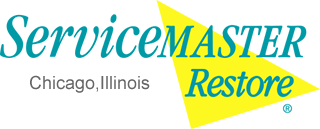Homes with finished and unfinished basements alike can benefit from a sump pump. In the case of rising water levels, these devices guide groundwater away from a residential space, reducing the chance of an indoor flood. There’s no such thing as a “one-size-fits-all” sump pump for property owners, but ServiceMaster of Lincoln Park is here to make the selection process manageable if you’re in the market for an all-new installation.
Why Do I Need a Sump Pump?
Sump pumps are useful devices when a basement is prone to flooding from heavy rainfall, melting snow and overflowing water sources. This technology will sit below your basement floor to monitor how much water is accumulating near your home’s foundation. Once levels reach a certain point, the motorized installation will redirect water from its main basin out through a drainage pipe.
A sump pump gives homeowners peace of mind by standing as a 24/7 flood watch system.
When to Use a Sump Pump System
If you’ve had to handle cleanup efforts in the basement at least once, allow a professional to install a sump pump. These systems are excellent for basement setups that exist below the water table of a residential area. When groundwater trickles through layers of soil around your home, your sump pump will catch the excess so that you don’t have to.
Submersible Sump Pumps vs. Pedestal Sump Pumps
Two main types of sump pumps are used by homeowners: submersible and pedestal. Both styles are capable of removing thousands of gallons of water from your residence during a rainstorm, but their placements differ:
- Submersible sump pumps: As the name implies, submersible sump pumps sit below basement floors in a pit. The majority of submersible sump pumps are concealed for a clean look and run quietly during operation. Homeowners tend to prefer this configuration, as it allows for better management of debris.
- Pedestal sump pumps: These sump pumps extend from an opening in the basement floor. The motor of the device sits above the surface of the sump pit with a hose that reaches downward. Pedestal styles are favorable to property owners looking to redirect rainfall on a budget.
Sump Pump Considerations
Primary sump pump systems provide plenty of options for power, backup support and alerts. Whether you’re upgrading your current sump pump or building your first home, keep the following factors in mind:
- Horsepower ranges: Horsepower translates into how fast your sump pump assembly will redirect groundwater. If your existing system has served you well, try to match that output for your upcoming purchase to ensure consistent results. Generally, the higher the horsepower, the faster the system will direct water from point A to point B. Be sure to review product information to make sure the sump pump system you buy is compatible with the size of your sump basin.
- Backup power: Submersible and pedestal sump pumps plug into electrical outlets for power. Select devices on the market will give you the opportunity to equip your pump with a backup battery in case of an outage. If you leave your home for long periods at a time, remember that installations with backup batteries can help to prevent indoor flooding while you’re away.
- Notification accessories: Sump pumps will allow you to attach Wi-Fi-enabled accessories and stay up to date with changes across the system. Know when your installation is up and running and when a problem has occurred with add-ons that notify you via text or email in case of an emergency.
Contact ServiceMaster of Lincoln Park for Water Restoration Services in Chicago
In need of water extraction, cleanup or flood restoration services near Chicago, Illinois? ServiceMaster of Lincoln Park is available 24/7 and will arrive at your residence with specialized equipment to get the job done right. Our technicians are trained to handle projects of any size, helping you take control of your property.
Call us at (773) 346-6767 to kickstart the water damage restoration process today.

